Piaget’s Schema & Learning Theory: 3 Fascinating Experiments
 Jean Piaget’s theories of cognitive development remain hugely influential in both the popular and academic understanding of how our knowledge of the world is shaped by developmental forces.
Jean Piaget’s theories of cognitive development remain hugely influential in both the popular and academic understanding of how our knowledge of the world is shaped by developmental forces.
Piagetian approaches to learning as a process of actively constructing knowledge have been particularly effective in education, where they challenged traditional methods of teaching that overlooked the importance of the child’s role as a learner.
In this article, you’ll gain a complete understanding of basic Piagetian theory and the strong body of experimental evidence supporting its application.
Before you continue, we thought you might like to download our three Positive Psychology Exercises for free. These science-based exercises explore fundamental aspects of positive psychology, including strengths, values, and self-compassion, and will give you the tools to enhance the wellbeing of your clients, students, or employees.
This Article Contains:
- Piaget’s Learning Theory & Constructivism
- What Are Schemas in Piaget’s Theory? 4 Examples
- Assimilation, Accommodation, & Equilibrium
- Piaget’s Theory vs Vygotsky’s
- 3 Fascinating Experiments Exploring Piaget’s Theories
- Implications in Education
- 3 Best Books on the Topic
- PositivePsychology.com’s Relevant Resources
- A Take-Home Message
- References
Piaget’s Learning Theory & Constructivism
Jean Piaget’s theory of cognitive development remains among the most complete and influential theories describing how the human mind shapes and develops through the process of learning.
At the University of Geneva in the 1960s, Piaget employed elegant experimental techniques and keen observational insight to analyze the moving pieces of cognitive development in children (Scott & Cogburn, 2021).
A biologist by training, Piaget took a pragmatic and mechanistic approach to understanding how the advanced architecture of human cognition develops, looking past the intuitive conception of the mind as something apparently complex and unapproachable to see simple and ordered principles of organization lying underneath (Scott & Cogburn, 2021).
At the core of Piaget’s theory are stages of development (Malik & Marwaha, 2021; Scott & Cogburn, 2021), a series of overall states of increasing cognitive sophistication defined principally by how the developing human ‘knows’ (i.e., understands) the world.
Learning is both the cognitive activity that occurs during these stages and the process of moving between stages. In each stage, children use a different set of cognitive tools to investigate and interpret the world and construct knowledge based on that interpretation. This, in turn, unlocks more sophisticated cognitive tools for more sophisticated learning, and so on.
The ultimate goal of this process of learning is to construct the most complete and accurate internal model of the world available at the time (Gandhi & Mukherji, 2021; Scott & Cogburn, 2021).
Sensorimotor period
The first stage occurs between birth to two years of age. In this stage, children understand their world only as far as simple physical interactions allow. For example, the world may be represented as things that can be touched and things that can be thrown.
The development of motor skills during this period allows the physical representation of the sensorimotor period to become more elaborate and finely tuned, with many potential ways of representing the world relating to different actions.
Preoperational period
In the preoperational period, occurring between two and seven years of age, children begin to understand the world using basic symbols and physical actions.
This marks the development of a more complex form of cognition but does not constitute the more advanced mental operations that emerge later in childhood (hence ‘pre-operational’).
Symbols include words, gestures, and simple imagery, and become increasingly governed by logic throughout the period.
Concrete operational period
Between 7 and 11 years of age, children begin to perform mental operations: internalized actions that are abstract and reversible. Children gain the ability to run simulations on their mental model of the world, which can be manipulated freely.
These mental operations follow a strict logical framework, and the content of these operations typically only represent concrete (i.e., ‘real’) objects.
Formal operational period
Between 11 and 15 years of age, children develop their ability to perform mental operations and expand the scope of the content of these operations to include abstract (e.g., mathematical or social concepts) and concrete objects.
Furthermore, they gain the ability to perform mental operations on mental operations themselves, such as evaluating the likelihood of something represented by a mental operation and comparing one mental operation with another.
Constructivism
A recurring theme throughout Piaget’s theory is the notion that learning is a process of construction, where the thing being constructed is the child’s internal model of the world or ‘reality’ more generally. This foundational theoretical assumption is called ‘constructivism’ (Gandhi & Mukherji, 2021).
Constructivism frames learning not as a process of absorbing knowledge that’s already out there in the world, but rather as a process of making knowledge from scratch.
This is done by using whatever cognitive tools learners have at their disposal to interpret incoming information and translate it into knowledge. Before it is interpreted, this incoming information lacks any objective content of knowledge; knowledge is something that is made after the fact.
This is contrary to the more traditional notion of learning as an individual receiving knowledge from a more knowledgeable source, such as a teacher in a classroom.
From the constructivist perspective, teachers are not a source of knowledge, but rather a source of information. Whether that information becomes knowledge or meaningless noise depends on the experience of the learner.
What Are Schemas in Piaget’s Theory? 4 Examples
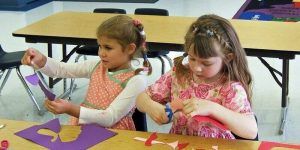
This framework comprises distinct structures of knowledge called schemas, which are organized and generalizable sets of knowledge about certain concepts. They typically contain a set of instructions or logical statements about a concept, as well as knowledge that can be applied to any instance of that concept.
Generalizability highlights the key function of schemas: an up-to-date set of instructions and ideas about as much of the world as possible, which can be used to predict and navigate the world in the future. Considering this, learning could more precisely be described as the process of keeping schemas up to date and developing new schemas where necessary (Scott & Cogburn, 2021).
While schemas are a constant feature of each stage of cognitive development, they change in content and sophistication, just as the stages do.
In the sensorimotor stage, a schema might be chewing, which encodes a set of instructions relating to how to chew and the motivations for chewing (e.g., chewing feels satisfying and stimulates hunger).
Within the schema for chewing are relevant categories of information, such as sets of objects that can and can’t be chewed. Likewise, objects that can be chewed might contain further categories: those that taste good, those that are particularly soft, and so on. All of the pertinent information for chewing is contained in the schema.
A preoperational stage schema might involve instructions for basic forms of communication. For example, a preoperational schema might involve all the information pertinent to waving, including what waving represents in a basic sense, when to wave, and the basic physical actions involved.
In the concrete operational period, schemas contain more detailed representations of the properties of objects. For example, a concrete operational schema for flowers might contain the typical features uniting all flowers, such as shapes, colors, locations, and also features that depend on mental operations, such as when it is appropriate to pick a flower and what to expect when a flower is given to a friend.
Finally, a formal operational schema might describe any number of abstract concepts. An example might be a schema containing abstract instructions for moral behavior that are described not only in basic physical or egocentric terms, but also involving religious ideals, non-egocentric ideas (e.g., empathy), and more abstract consequences and motivations for behaving morally.
Alternatively, a formal operational schema may be entirely abstract, such as rules governing mathematical or logical operations that lack any obvious physical description (Scott & Cogburn, 2021).
Assimilation, Accommodation, & Equilibrium
Another constant feature described in Piaget’s theory are the actual processes by which schemas are updated with newly constructed knowledge (Scott & Cogburn, 2021).
Overall, these processes are known as adaptation, which is another way to describe using the most sophisticated cognitive tools available to keep schemas up to date. Adaptation involves two complementary sub-processes: assimilation and accommodation (Scott & Cogburn, 2021).
Assimilation is the process of integrating new knowledge into existing schemas by editing the new knowledge to ensure an acceptable fit.
In other words, assimilation involves updating schemas without changing the structure of those schemas. This is a common process; to an extent, all our cognition is constrained by basic universal rules and principles that create a fundamental unchanging cognitive structure, and it is useful to use these rules to ‘warp’ knowledge in order to fit.
Some schemas are resistant to change due to personal significance or simply because it may be easier to edit new knowledge rather than overhaul the existing mental organization.
Accommodation, in contrast, is the process of adjusting the cognitive organization of schemas in response to new knowledge. This occurs when the existing structure cannot account for the new information, rendering assimilation impossible.
As a simple example, a child may have a schema for birds that includes everything with wings and a schema for mammals that includes everything without wings. When they are presented with a bat, they are faced with a fundamental contradiction of this organization and have to reshuffle their cognitive structures to accommodate and make sense of this shared feature.
These two sub-processes occur in a cycle, as accommodation creates and reshapes the cognitive structure of schemas, which helps assimilate new knowledge, until accommodation is again necessary, and so on.
The goal of this cycle is to maintain as much equilibrium as possible, where there is no conflict between new knowledge and existing knowledge. This state of equilibrium can never be perfect, but learning is the act of trying to make it increasingly stable.
Piaget’s schema – Sprouts
Piaget’s Theory vs Vygotsky’s
Piaget’s work is commonly compared with that of Lev Vygotsky, another influential learning theorist conducting research at a similar time.
Their theoretical approaches are both primarily concerned with how knowledge is constructed and reject the traditional notion of knowledge as something that is transferred from one individual to another.
However, while Piaget emphasized that knowledge is constructed by the individual and shaped by existing cognitive structures (schemas) that organize the experiences of that individual, Vygotsky saw knowledge construction occurring elsewhere.
Vygotsky’s theory asserts that knowledge is constructed in the individual’s immediate social environment and shaped and interpreted by the individual’s use of language.
In Vygotsky’s theory, language takes the place of Piaget’s cognitive tools and actions. According to Vygotsky, individuals know the world through language, and the extent to which they know the world is mediated by the extent to which they can use language (Stewin & Martin, 1974; Lourenço, 2012).
Importantly, when considering the inherently social aspect of language, it follows that other individuals in someone’s immediate social context would be equally influential in how the individual knows the world.
As a result, in the place of internal stages of development, Vygotsky described external zones of development: social contexts within which individuals can use language to construct knowledge and develop, expanding the scope to include a broader social context for development, and so on.
Piaget and Vygotsky’s approaches are not wholly mutually exclusive, as a Piagetian theorist must acknowledge the influence of context in constructing knowledge, just as Vygotskyian theorists must acknowledge the influence of individual experience in constructing knowledge.
3 Fascinating Experiments Exploring Piaget’s Theories
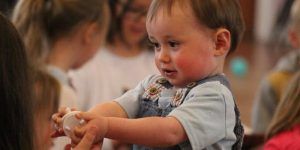
Likewise, this works in reverse, meaning that cognitive development becomes evident through observing how an individual apparently perceives the world.
A foundational experiment underlying Piaget’s theory examines differences in the ability to understand conservation of quantity. Children younger than seven were shown a row of squares and a row of circles of equal quantity. They were correctly able to identify that there were the same number of squares as circles.
However, when the experimenter moved the squares further apart, making a row of greater length, the children now answered that there were more squares than circles.
Because they lack the ability for reversible mental operations developed in the concrete operational stage, changing the appearance of the squares to make the space they occupied larger was sufficient justification for the children to conclude there were more (Kubli, 1979, 1983).
Other experiments have similarly shown how comprehending conservation changes as a function of developmental changes in how the world is represented. For example, another experiment showed children a pair of rods of identical length, placed side by side to demonstrate their equivalence. One of the rods was then displaced so that its position was nearer and therefore appeared longer.
Children younger than six were able to correctly identify the rods as equivalent length when they were side by side, but when displaced, they concluded one rod had become larger. Some slightly older children suggested the rods may become equivalent length again if the displaced rod was returned to its original position, demonstrating their development of reversibility.
Finally, the oldest children concluded that length was an invariant property that was conserved regardless of how the rod was displaced, showing a confident grasp of both reversibility and conservation (Kubli, 1979, 1983).
Another experiment clearly illustrates the development and refinement of schemas that accompany the transition between stages in Piaget’s theory. Children were presented with a picture featuring a bunch of flowers consisting of five asters and two tulips. They were then asked whether there were more asters in the picture or more flowers.
In children younger than roughly eight years of age, the typical answer is that there are more asters, demonstrating that these children have not yet developed the ability to comprehensively categorize the world into schemas of related objects and concepts, and therefore do not recognize that flowers should be a category inclusive of asters (Politzer, 2016).
Implications in Education

Here are a few considerations of specific importance (Kubli, 1979).
The development of the ability to comprehend invariance and reversibility defines much of the content of Piaget’s stages. The development of these concepts reflects children’s understanding of rules that extend throughout the world and provide a fundamental basis for reality, and the development of the mental operations necessary to reason based on these rules.
As a result, teachers should adopt an approach that closely follows their students’ search for invariant rules and experimentation with reversibility. Teachers should not adopt a heavy-handed approach where they walk their students through these rules, nor should they become too detached from their students’ development and assume certain types of knowledge that their students may not have discovered yet.
Instead, the process of teaching should be a journey characterized by the discovery and construction of new forms of knowledge.
In an applied education context, teachers should also be careful not to focus too strongly on the theoretical assumptions of constructivism. While constructivism emphasizes the role of the learner as an individual, learning often occurs in a social context alongside a class.
Consequently, although learners are engaged in the construction of their own knowledge, they will inevitably try to model their knowledge on others and form theories about the world that are acceptable and relatable to others. Teachers should, therefore, remain aware that their assumptions and attitudes as educators remain highly influential in a constructivist framework.
3 Best Books on the Topic
To get an in-depth understanding of Piaget’s Schema & Learning Theory, we suggest investing in the following books:
1. The Psychology of the Child – Jean Piaget and Bärbel Inhelder
The Psychology of the Child provides the most accessible means of studying Piaget’s original work underlying his influential theory.
While contemporary writers may do a better job of putting Piagetian theory in context, when it comes to understanding and engaging with the theory itself, there is no substitute to reading about it in the words of the seminal psychologist himself.
Find the book on Amazon.
2. Children’s Thinking – Robert Siegler
Children’s Thinking provides a solid academic reference for a variety of theoretical approaches to cognitive development, including Piagetian theory.
It’s rarely useful to take a single-track approach to psychology, and your understanding and application of Piagetian theory will be improved greatly by learning about other theories of childhood cognition and development, which through their differences or similarities help to delineate Piaget’s ideas.
Find the book on Amazon.
3. Constructivism: Theory, Perspectives and Practice – Catherine Fosnot
This book by Catherine Fosnot is a comprehensive and practical text analyzing the fundamental assumptions and applications of constructivist epistemology.
Studying the epistemological assumptions underlying psychological theory can seem like a chore, but it is absolutely vital in order to engage with your knowledge and develop a confident and flexible approach to applying Piagetian theory.
Fortunately, Fosnot’s insightful description and commentary are anything but a chore to read.
Find the book on Amazon.
PositivePsychology.com’s Relevant Resources
On our site, we have many relevant resources that will give a more solid theoretical background and also provide practical ways to apply theory. Here are a few recommended reads:
- Developmental Psychology 101: Theories, Stages, & Research provides a great alternative to the suggested reading above if you want a more digestible overview of the predominant theories of cognitive development and valuable insight into the broader theoretical context alongside Piaget’s ideas.
- Applying Positive Psychology in Schools & Education is a comprehensive guide to applying your knowledge of psychological theory in education. If you are learning about Piagetian theory as an educator, this article will provide essential further reading for developing the ideas you’ve learned here.
- Top 37 Educational Psychology Books, Interventions, & Apps is an excellent resource if you want to go beyond the recommended books listed above. Educational psychology is a truly vast topic, with many fascinating ideas to explore in a variety of media, and this article will help you begin your deeper exploration of the topic.
If you’re looking for more science-based ways to help others enhance their wellbeing, check out this signature collection of 17 validated positive psychology tools for practitioners. Use them to help others flourish and thrive.
A Take-Home Message
Piaget’s theory of cognitive development provides a comprehensive and useful theoretical framework for thinking deeply about how information is translated to knowledge in the developing mind.
This has important implications for education, as having a clear theoretical framework for understanding how children learn helps make teaching a more structured and efficient activity for both teachers and students alike.
More generally, Piaget’s ideas also highlight the importance of considering the different ways individuals can have knowledge of the world, depending on their stage of development and methods of learning.
We hope you enjoyed reading this article. Don’t forget to download our three Positive Psychology Exercises for free.
- Fosnot, C. T. (2005). Constructivism: Theory, perspectives, and practice (2nd ed.). Teachers College Press.
- Gandhi, M. H., & Mukherji, P. (2021). Learning theories. StatPearls. Retrieved November 5, 2021, from http://www.ncbi.nlm.nih.gov/books/NBK562189/
- Kubli, F. (1979). Piaget’s cognitive psychology and its consequences for the teaching of science. European Journal of Science Education, 1(1), 5–20.
- Kubli, F. (1983). Piaget’s clinical experiments: A critical analysis and study of their implications for science teaching. European Journal of Science Education, 5(2), 123–139.
- Lourenço, O. (2012). Piaget and Vygotsky: Many resemblances, and a crucial difference. New Ideas in Psychology, 30(3), 281–295.
- Malik, F., & Marwaha, R. (2021). Cognitive development. StatPearls. Retrieved November 5, 2021, from http://www.ncbi.nlm.nih.gov/books/NBK537095/
- Piaget, J., & Inhelder, B. (1969). The psychology of the child. Basic Books.
- Politzer, G. (2016). The class inclusion question: A case study in applying pragmatics to the experimental study of cognition. SpringerPlus, 5(1), 1133.
- Scott, H. K., & Cogburn, M. (2021). Piaget. StatPearls. Retrieved November 5, 2021, from http://www.ncbi.nlm.nih.gov/books/NBK448206/
- Siegler, R. S. (1997). Children’s thinking (3rd ed.). Prentice Hall.
- Stewin, L. L., & Martin, J. (1974). The developmental stages of L. S. Vygotsky and J. Piaget: A comparison. Alberta Journal of Educational Research, 20(4), 348–362.
Let us know your thoughts
Read other articles by their category
- Body & Brain (49)
- Coaching & Application (57)
- Compassion (26)
- Counseling (51)
- Emotional Intelligence (24)
- Gratitude (18)
- Grief & Bereavement (21)
- Happiness & SWB (40)
- Meaning & Values (26)
- Meditation (20)
- Mindfulness (45)
- Motivation & Goals (45)
- Optimism & Mindset (34)
- Positive CBT (28)
- Positive Communication (20)
- Positive Education (47)
- Positive Emotions (32)
- Positive Leadership (18)
- Positive Parenting (4)
- Positive Psychology (33)
- Positive Workplace (37)
- Productivity (16)
- Relationships (46)
- Resilience & Coping (36)
- Self Awareness (21)
- Self Esteem (37)
- Strengths & Virtues (31)
- Stress & Burnout Prevention (34)
- Theory & Books (46)
- Therapy Exercises (37)
- Types of Therapy (64)

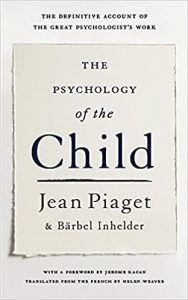
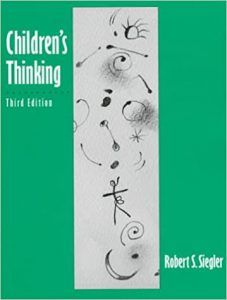
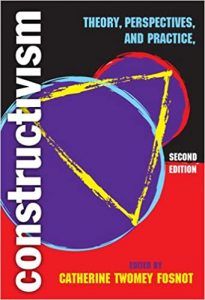




What our readers think
Hello!
Thanks for the great article.
However, I have an observation.
I’m a teacher in a government primary school. I wish there had more information about how I can use this theory in my lesson plan or in education.
Hi Sagir,
Glad you enjoyed the article! I will make sure our writing team will receive your feedback 🙂
Kind regards,
Julia | Community Manager